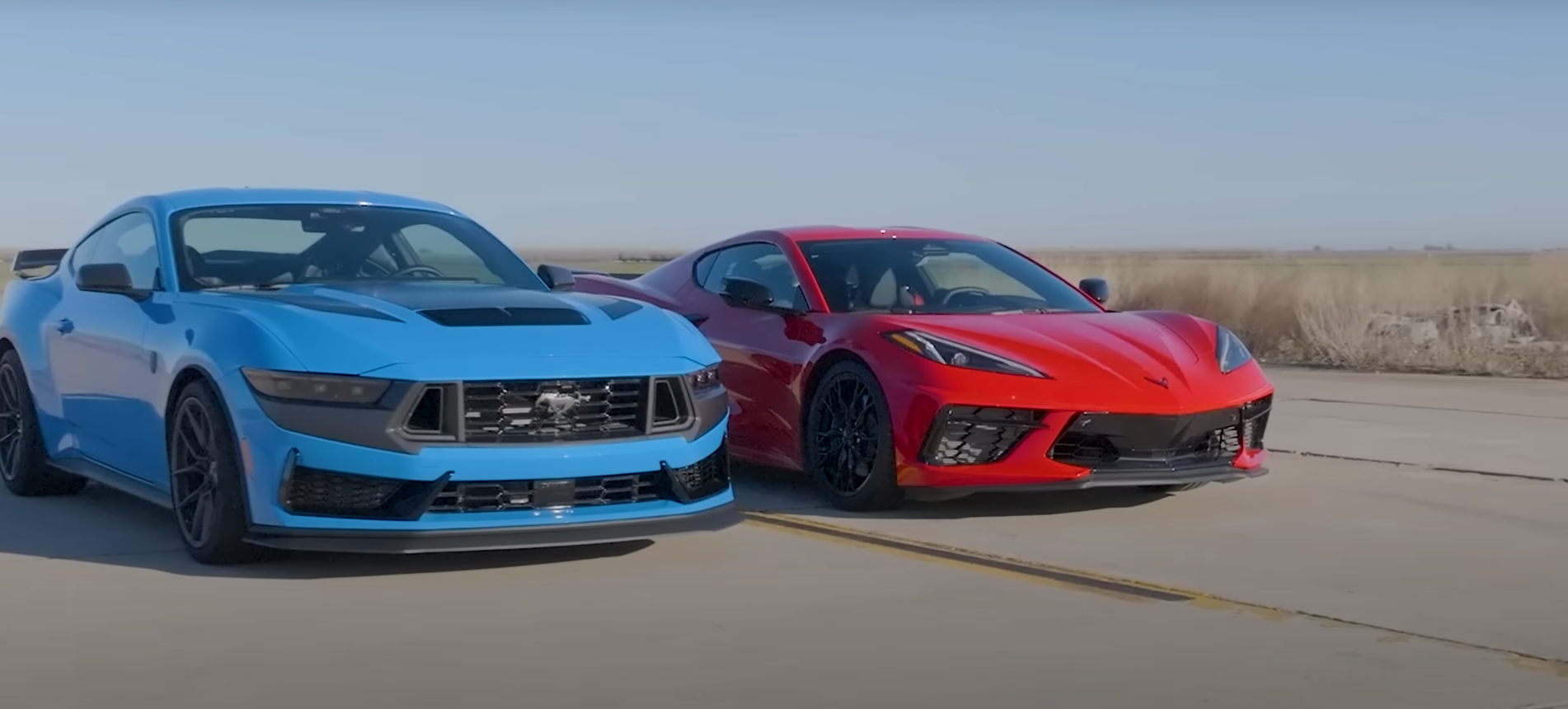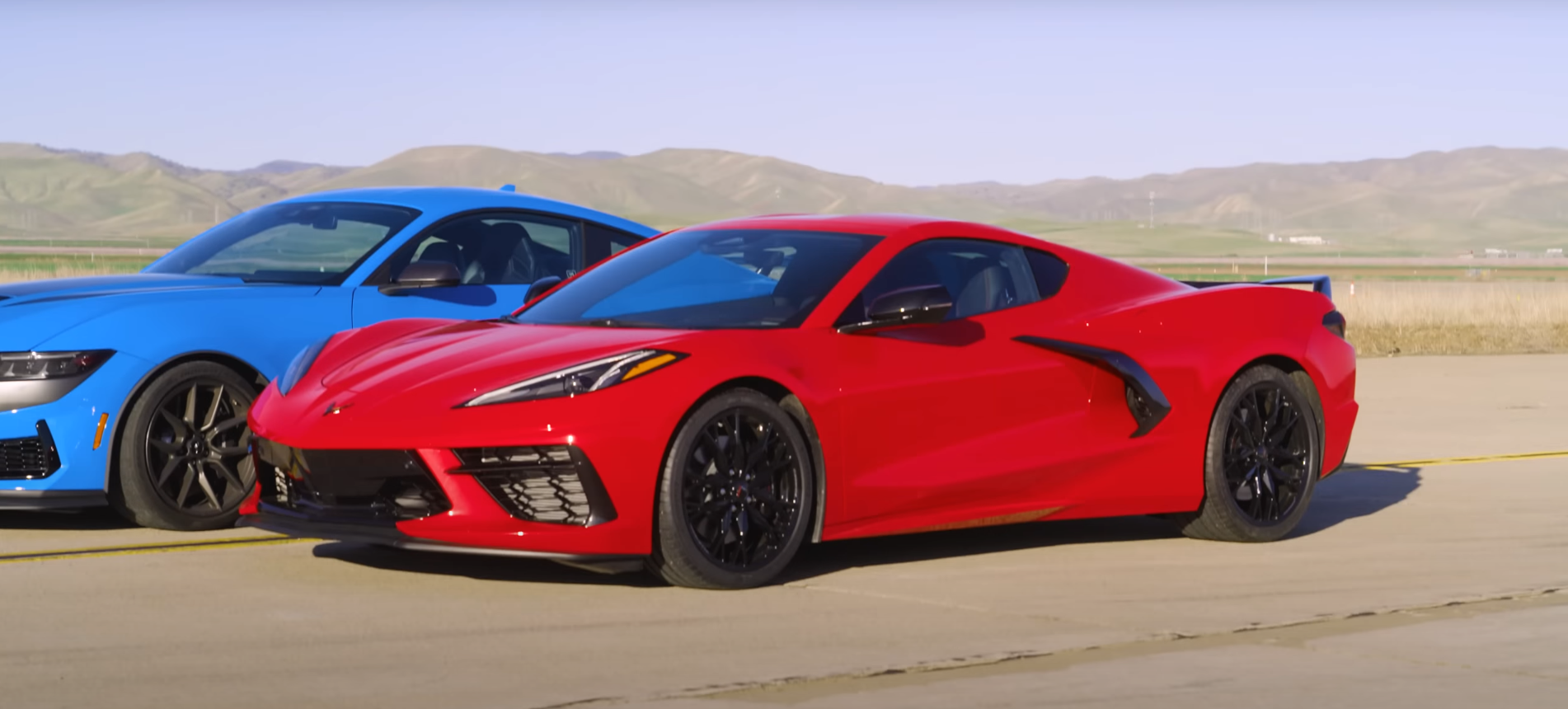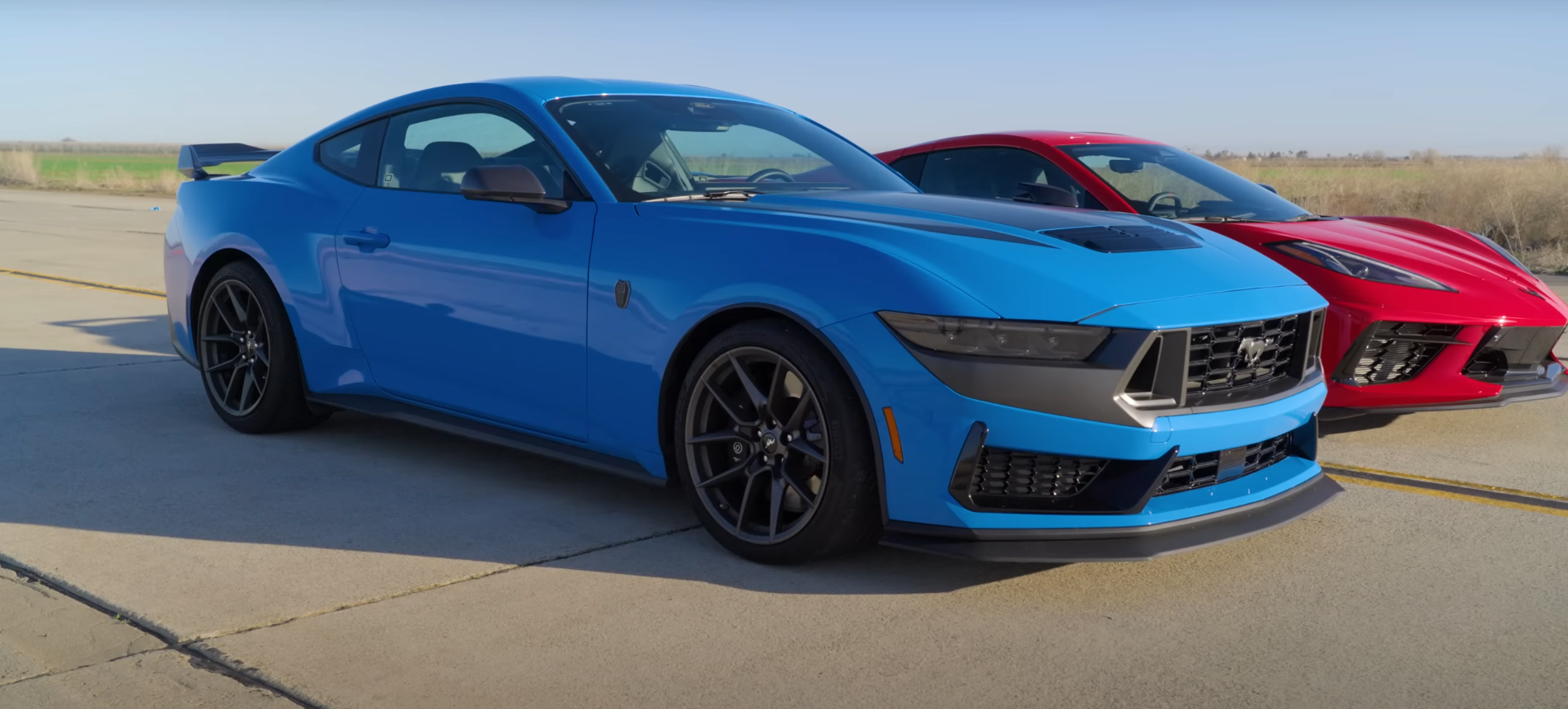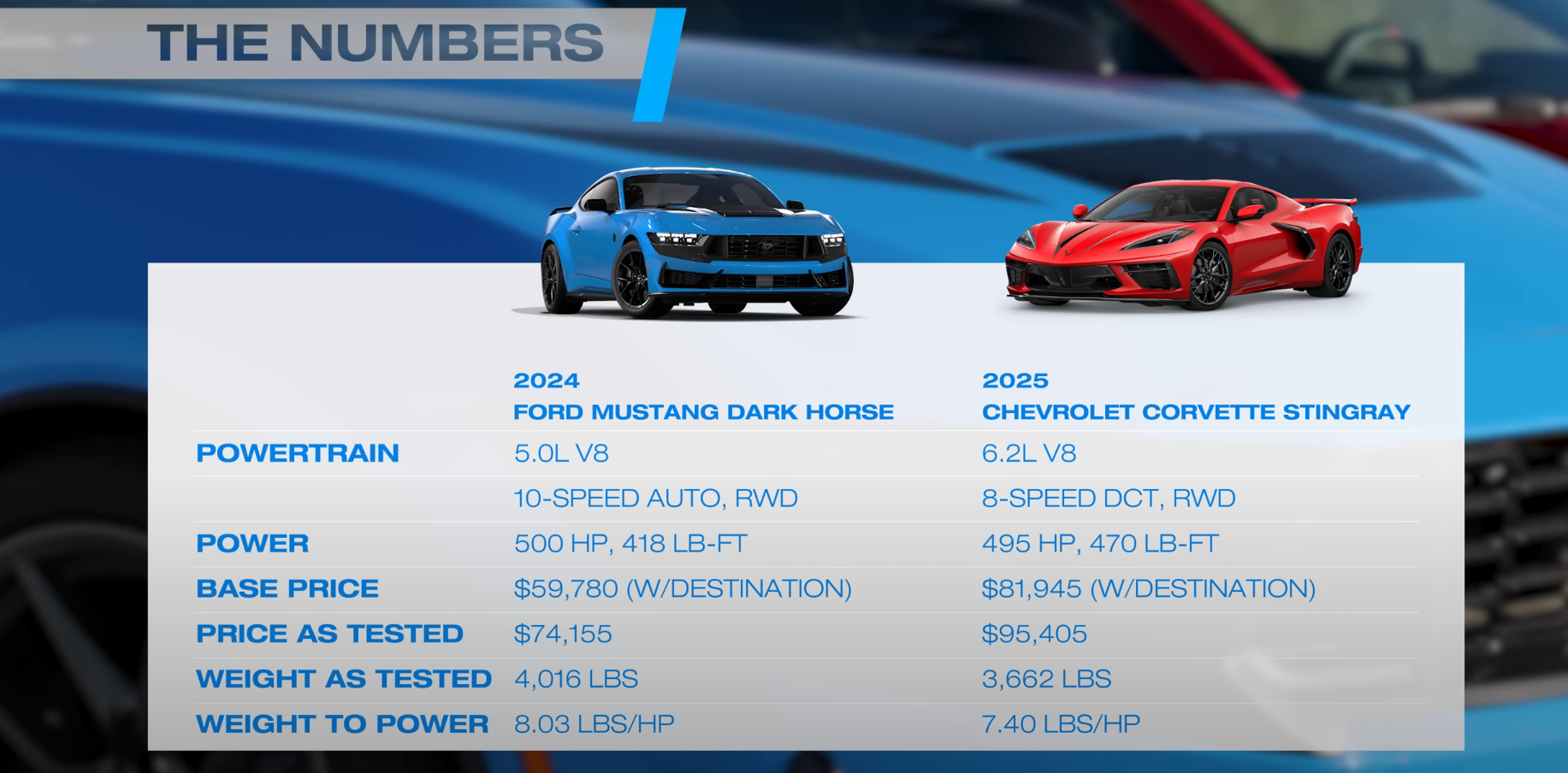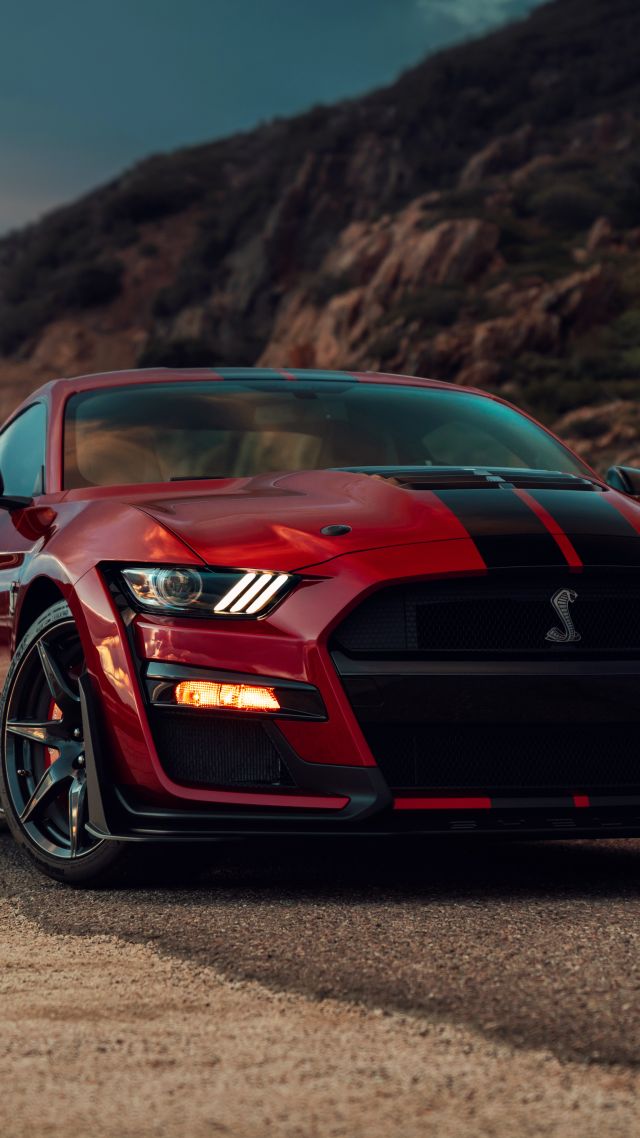When two powerful sports cars face off, the competition is intense. In this event, the Chevrolet Corvette Stingray and the Ford Mustang Dark Horse are put to the test on the Edmunds U-Drags circuit. Both cars have unique features and strengths, and the racing format is designed to show which one really stands out.
Viewers follow the process as the drivers explain each car’s setup and racing methods. The comparison is close, with each vehicle having its own advantages in power, handling, and technology. This head-to-head match gives a clear view into how these cars perform under pressure.
Key Takeaways
- The article covers the specs and racing of the Corvette Stingray and Mustang Dark Horse.
- Both cars are tested in a unique U-Drags format for fair comparison.
- Results highlight differences in launch, speed, and future upgrade plans.
Vehicle Specifications
2025 Chevy Corvette Stingray Details
- Engine: 6.2-liter V8
- Horsepower: 495 hp
- Torque: 470 lb-ft
- Drive Layout: Mid-engine
- Transmission: Advanced automatic with launch control
- Tires: Michelin Pilot Sport 4 S
- Notable Features:
- Launch control system
- Track mode with multiple stability settings
- Lightweight build and balanced weight distribution
2024 Ford Mustang Dark Horse Details
- Engine: V8
- Horsepower: 500 hp
- Torque: 418 lb-ft
- Drive Layout: Front-engine
- Transmission: Automatic without launch control
- Tires: Pirelli P Zero Trofeo RS
- Notable Features:
- High-performance tires for enhanced grip
- Track driving mode
- Lacks launch control in automatic version
Performance Results Compared
| Metric | Corvette Stingray | Mustang Dark Horse |
|---|---|---|
| 0-60 mph | 3.4 seconds | Not specified |
| 1/4 Mile Time | 11.7 seconds | Not specified |
| 1/4 Mile Speed | 120.4 mph | Not specified |
| Maximum Cornering (G) | 1.23 | Not specified |
- The Corvette Stingray has faster acceleration and quarter-mile performance.
- Its mid-engine layout and launch control provide a strong advantage in traction and stability.
- The Mustang Dark Horse offers more horsepower but struggles with traction at launch, especially due to the lack of launch control in the automatic version.
- Both cars feature performance-oriented tires, but the Corvette’s weight balance and gearbox technology contribute to its superior track results.
How U-Drags Racing Works
General Race Format
U-Drags competitions use a loop layout. Each race starts with both cars lined up side by side. Drivers accelerate down a straight for a quarter mile. At the end, they must brake hard, complete a quick 180-degree turn, and race back to the starting line.
The course requires both speed and skill. After crossing the finish line, the car that returns first is the winner.
Key Features:
- Side-by-side start
- Quarter mile straightaway
- Tight 180-degree turnaround
- Sprint back to finish
| Step | Description |
|---|---|
| 1 | Launch from starting line |
| 2 | Run quarter mile straight |
| 3 | Brake and 180-degree turn |
| 4 | Race back to finish |
Swapping Drivers and Lanes
After the first race, both the drivers and lanes are switched for fairness. Each participant takes a turn in both vehicles and on each side of the track.
- Drivers switch cars.
- Cars return to the starting line, but in the opposite lanes.
- Racers repeat the full layout using their new assignments.
Switching places helps balance any track or vehicle differences, making the outcome rely more on skill and not just luck.
How We Tested
Surface and Weather Details
Drivers tested both vehicles on the Edmunds U-Drive course. The course includes a quarter-mile sprint, a full-brake 180-degree turn, and a return dash to the finish line. Each vehicle raced on the same tarmac using both lanes, with driver and lane swaps after the first round to keep things fair.
Both the Chevrolet Corvette Stingray and the Ford Mustang Dark Horse were tested under similar weather and track conditions. This helped control for outside factors that could affect grip, handling, and acceleration.
Track Features:
- Start with a straight drag race
- Brake hard at midpoint and complete a 180-degree turn
- Accelerate back to finish
Tire Choices and Performance
The Corvette Stingray wore Michelin Pilot Sport 4 S tires. The Mustang Dark Horse ran on Pirelli P Zero Trofeo RS tires. The tires on the Mustang were more aggressive, giving it an edge in grip during heavy braking and tight turns.
Tire Details Table:
| Car | Tire Model | Tire Benefits |
|---|---|---|
| Corvette Stingray | Michelin Pilot Sport 4 S | Balanced for dry and wet grip |
| Mustang Dark Horse | Pirelli P Zero Trofeo RS | High-performance, more grip |
Although the Mustang had a power advantage, it depended on these aggressive tires to help control wheel spin and improve cornering. The Corvette’s tires provided a balance between straight-line speed and handling.
Electronic Start Systems
The Corvette Stingray came equipped with launch control, a feature that makes fast and consistent starts easier by managing traction and throttle. To activate, drivers set the car to track mode, enable the traction settings, and use launch control for best acceleration.
The Mustang Dark Horse, at least with the automatic, does not have this system. Drivers could only use a power-braking method to raise engine speed to around 2,000 RPM before releasing the brake and applying throttle smoothly. This made it more challenging to start cleanly and keep up with the Corvette off the line. The absence of launch control in the Mustang automatic limited its ability to match the Corvette’s quick starts.
Results and Insights from Both Races
First Run: Initial Outcomes
The first showdown between the Corvette Stingray and Mustang Dark Horse highlighted the strengths of both cars. The Corvette, using its launch control and mid-engine design, took an early lead and kept it through the finish. The Mustang could not match the Corvette off the line, despite having slightly more horsepower.
Performance Comparison Table:
| Car | Horsepower | Torque (lb-ft) | Tire Type | 0-60 mph (s) | 1/4 Mile (s @ mph) |
|---|---|---|---|---|---|
| Corvette Stingray | 495 | 470 | Michelin Pilot Sport 4 S | 3.4 | 11.7 @ 120.4 |
| Mustang Dark Horse | 500 | 418 | Pirelli P Zero Trofeo RS | — | — |
- Launch Control: Corvette advantage
- Mid-engine layout: Better balance for Corvette
- Mustang strength: More power, but struggled for traction
Second Run: Switched Drivers, Different Experience
For the second round, drivers switched cars. Starting in the Mustang, the main issue remained—traction at the start. The car’s tires and grip were not enough to overcome the lack of launch control. In the Corvette, the driver was able to maximize launch and quickly built a lead.
Despite being more competitive after the launch, the Mustang still could not make up the gap. The Corvette’s braking and cornering confirmed its edge, and its advanced gearbox helped keep the advantage.
List of Notable Points:
- Driver swap did not change the race outcome
- Corvette’s launch control and gearbox repeated as clear strengths
- Mustang performed well once moving, but the launch lag was too much to overcome
Main Findings and Notable Details
- The Corvette Stingray excelled in acceleration, braking, and cornering.
- 0-60 mph time: 3.4 seconds for Corvette
- Quarter mile: 11.7 seconds at 120.4 mph (Corvette)
- Max cornering: 1.23 Gs (Corvette)
Key Observations:
- Launch control and mid-engine layout provided the Corvette a decisive edge.
- The Mustang’s higher horsepower was not enough to compensate for slower starts and less traction.
- Both cars were enjoyable to drive, but the performance gap was clear in these tests.
Supercharging Goals for Mustang Dark Horse
Upgrade Roadmap
The team plans to boost the Mustang Dark Horse’s performance with a supercharger kit from Ford. This upgrade is expected to raise the car’s output to over 800 horsepower. The goal is to make the Mustang much more competitive on the track.
Planned Enhancements:
- Ford Supercharger Kit: Targeting over 800 horsepower
- Keep current track-focused tires for grip
- No mention of additional upgrades at this stage
With more power, the Mustang should see a big jump in straight-line speed and overall race potential.
Anticipated Performance Matchup
Once the supercharger is added, a rematch is planned between the supercharged Mustang Dark Horse and the Chevrolet Corvette Stingray. The team expects this will set a new benchmark for both cars.
Current Comparison Table:
| Car | Horsepower | Launch Control | 0-60 mph (sec) | Quarter Mile (sec) | Max Cornering (G) |
|---|---|---|---|---|---|
| Corvette | 495 | Yes | 3.4 | 11.7 @ 120.4 mph | 1.23 |
| Mustang (stock) | 500 | No | Not stated | Not stated | Not stated |
| Mustang (future, est.) | 800+ | No | TBD | TBD | TBD |
A future test will compare the supercharged Mustang directly against the Corvette under the same track conditions to see if the extra horsepower leads to better results.
Key Expectations:
- Mustang may close or surpass the performance gap
- Direct back-to-back testing planned after upgrade
- Will measure launch, cornering, and straight-line speed again
Wrap-Up and Key Takeaways
Performance Highlights
- Chevrolet Corvette Stingray
- 0-60 mph: 3.4 seconds
- Quarter mile: 11.7 seconds at 120.4 mph
- Max cornering: 1.23 G
- Ford Mustang Dark Horse
- Horsepower: 500
- Tire advantage: More aggressive grip
Notable Features
| Feature | Corvette Stingray | Mustang Dark Horse |
|---|---|---|
| Engine Placement | Mid-engine | Front engine |
| Launch Control | Yes | No (automatic version) |
| Transmission | Advanced gearbox | Lacks similar system |
| Traction Management | Electronic assists | Manual control |
Driver Impressions
- Corvette’s launch control and balanced design help it take an early lead.
- Mustang’s extra power and sticky tires improve performance mid-race, but getting off the line remains difficult.
- Both vehicles shine in different ways, with the Corvette feeling sophisticated and the Mustang providing a raw driving experience.
Tips for Track Success
- Effective launch control is crucial for quick starts.
- Weight distribution and advanced electronics give a consistent edge in competitive runs.
- Smooth throttle control helps manage wheel spin, especially in cars without launch aids.
Both the Corvette Stingray and the Mustang Dark Horse show unique strengths, making for a close and exciting head-to-head test. Bold engineering choices and differing strategies shape each car’s on-track identity.


